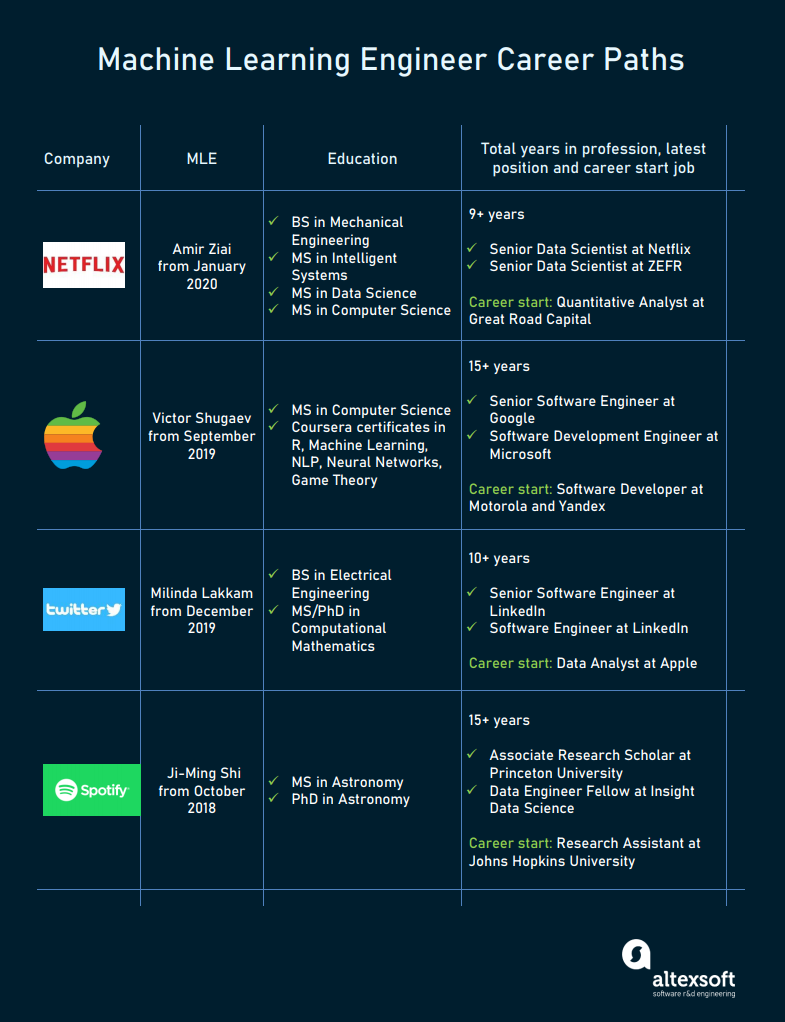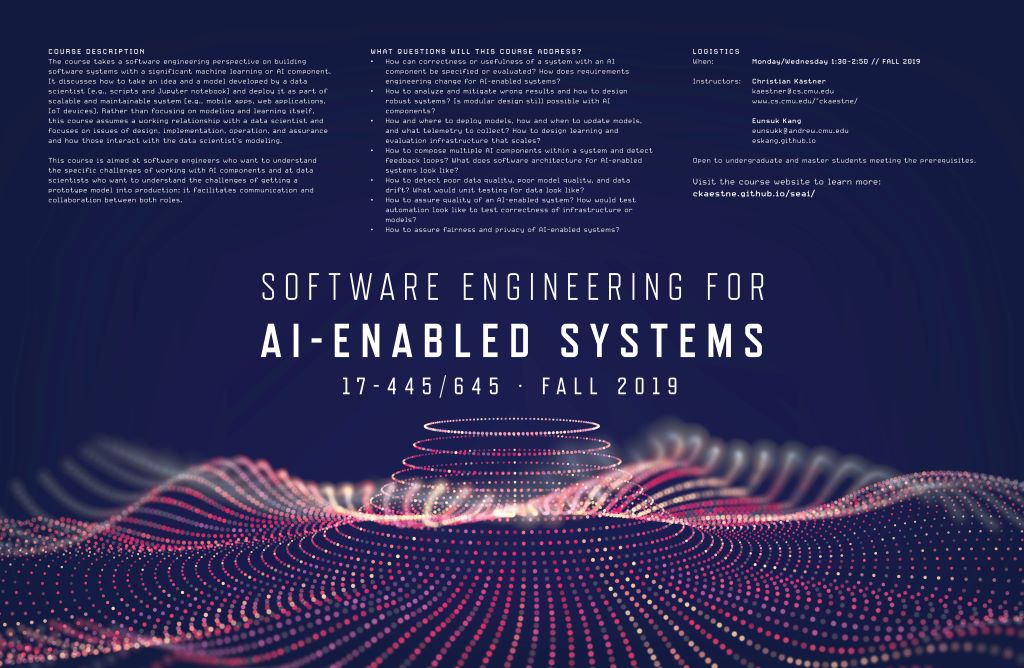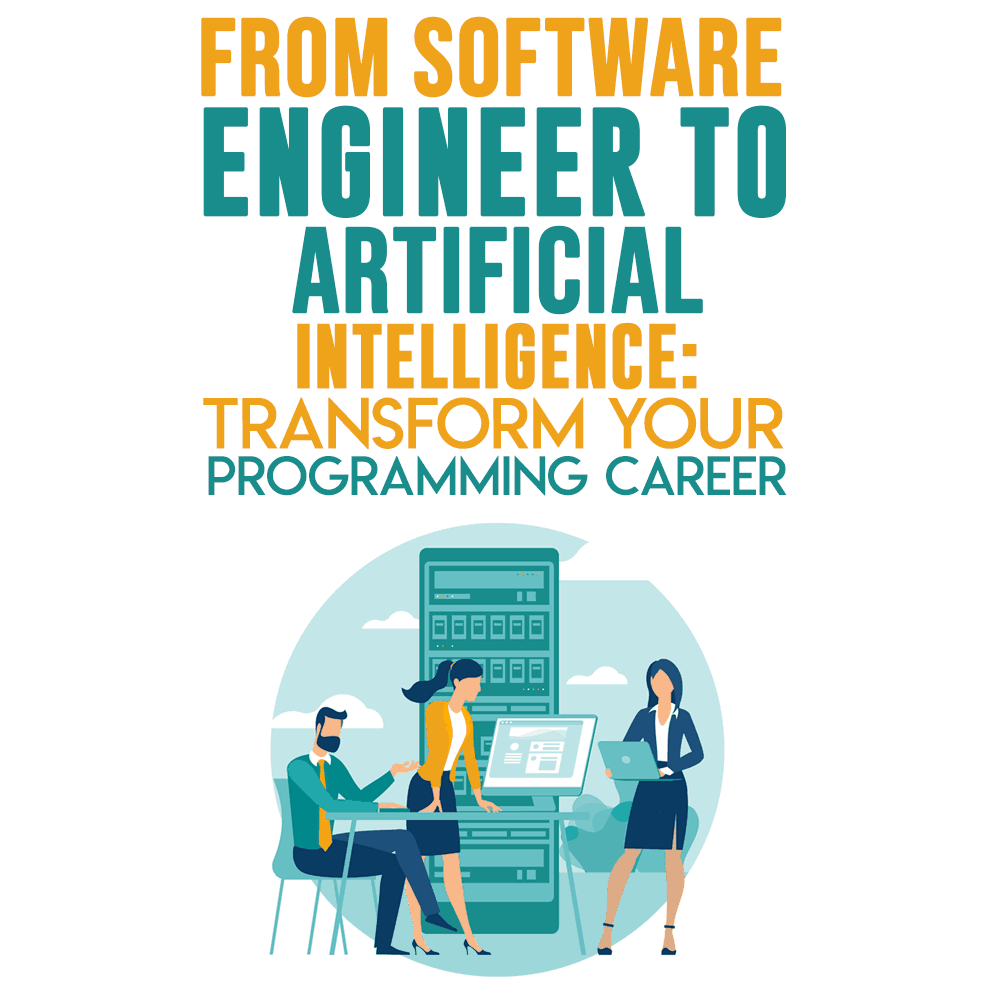All Categories
Featured
Table of Contents
- – The Basic Principles Of Software Engineer Want...
- – Get This Report on Machine Learning In Product...
- – Machine Learning Online Course - Applied Mach...
- – 4 Easy Facts About Top Machine Learning Caree...
- – Things about How To Become A Machine Learnin...
- – Excitement About Machine Learning Engineers:...
You possibly know Santiago from his Twitter. On Twitter, daily, he shares a great deal of practical features of maker learning. Thanks, Santiago, for joining us today. Welcome. (2:39) Santiago: Thanks for inviting me. (3:16) Alexey: Prior to we enter into our primary topic of moving from software engineering to equipment discovering, maybe we can begin with your history.
I started as a software program developer. I mosted likely to college, got a computer scientific research degree, and I started constructing software application. I believe it was 2015 when I determined to choose a Master's in computer technology. Back then, I had no idea concerning equipment discovering. I didn't have any type of interest in it.
I understand you have actually been using the term "transitioning from software engineering to artificial intelligence". I like the term "contributing to my ability the machine understanding skills" much more since I assume if you're a software designer, you are currently giving a whole lot of value. By integrating device understanding currently, you're increasing the influence that you can carry the market.
Alexey: This comes back to one of your tweets or perhaps it was from your training course when you contrast two techniques to learning. In this situation, it was some trouble from Kaggle concerning this Titanic dataset, and you simply learn how to fix this problem using a details tool, like decision trees from SciKit Learn.
The Basic Principles Of Software Engineer Wants To Learn Ml
You first learn math, or straight algebra, calculus. When you recognize the mathematics, you go to equipment learning theory and you learn the theory.
If I have an electric outlet here that I require changing, I do not intend to most likely to college, invest four years comprehending the mathematics behind power and the physics and all of that, simply to alter an electrical outlet. I would certainly rather begin with the outlet and find a YouTube video that assists me experience the trouble.
Negative analogy. Yet you understand, right? (27:22) Santiago: I truly like the idea of beginning with a problem, trying to throw away what I know approximately that problem and understand why it doesn't work. Get hold of the tools that I require to address that trouble and begin excavating deeper and deeper and much deeper from that point on.
Alexey: Possibly we can talk a bit about learning sources. You stated in Kaggle there is an intro tutorial, where you can get and learn how to make choice trees.
The only need for that training course is that you recognize a little bit of Python. If you go to my account, the tweet that's going to be on the top, the one that states "pinned tweet".
Get This Report on Machine Learning In Production / Ai Engineering

Even if you're not a developer, you can start with Python and function your way to more maker knowing. This roadmap is concentrated on Coursera, which is a system that I really, truly like. You can investigate all of the courses for totally free or you can spend for the Coursera membership to obtain certificates if you intend to.
That's what I would certainly do. Alexey: This comes back to among your tweets or perhaps it was from your program when you compare two strategies to understanding. One technique is the issue based method, which you simply discussed. You discover a problem. In this instance, it was some problem from Kaggle concerning this Titanic dataset, and you just find out how to fix this issue using a particular device, like choice trees from SciKit Learn.

You initially discover math, or linear algebra, calculus. When you recognize the mathematics, you go to maker knowing concept and you discover the concept.
If I have an electric outlet right here that I need replacing, I don't wish to most likely to university, invest 4 years recognizing the mathematics behind electrical energy and the physics and all of that, just to transform an electrical outlet. I prefer to begin with the electrical outlet and find a YouTube video clip that aids me undergo the issue.
Santiago: I actually like the concept of beginning with an issue, attempting to throw out what I understand up to that trouble and comprehend why it does not work. Get the devices that I require to address that issue and start excavating much deeper and much deeper and deeper from that point on.
To make sure that's what I generally advise. Alexey: Possibly we can speak a bit about discovering resources. You stated in Kaggle there is an intro tutorial, where you can obtain and discover how to make decision trees. At the beginning, before we began this meeting, you pointed out a number of books as well.
Machine Learning Online Course - Applied Machine Learning for Dummies
The only requirement for that course is that you understand a little bit of Python. If you go to my profile, the tweet that's going to be on the top, the one that says "pinned tweet".
Even if you're not a designer, you can begin with Python and work your method to more artificial intelligence. This roadmap is focused on Coursera, which is a platform that I truly, actually like. You can investigate every one of the courses free of charge or you can pay for the Coursera membership to obtain certificates if you desire to.
4 Easy Facts About Top Machine Learning Careers For 2025 Shown
Alexey: This comes back to one of your tweets or possibly it was from your program when you compare two approaches to knowing. In this case, it was some trouble from Kaggle about this Titanic dataset, and you just discover how to solve this problem making use of a specific device, like decision trees from SciKit Learn.

You initially discover mathematics, or linear algebra, calculus. When you understand the math, you go to equipment understanding theory and you discover the theory. After that 4 years later on, you finally involve applications, "Okay, how do I utilize all these 4 years of math to resolve this Titanic trouble?" Right? So in the former, you kind of conserve on your own a long time, I think.
If I have an electric outlet right here that I need changing, I don't desire to most likely to college, invest four years comprehending the mathematics behind electrical energy and the physics and all of that, simply to change an electrical outlet. I would certainly instead begin with the outlet and locate a YouTube video that helps me undergo the issue.
Negative analogy. However you understand, right? (27:22) Santiago: I actually like the idea of beginning with a problem, attempting to throw out what I recognize approximately that issue and recognize why it does not function. Then grab the devices that I require to resolve that trouble and begin digging much deeper and deeper and much deeper from that point on.
That's what I generally advise. Alexey: Perhaps we can talk a bit concerning discovering sources. You stated in Kaggle there is an introduction tutorial, where you can obtain and discover just how to choose trees. At the beginning, before we began this interview, you stated a couple of books.
Things about How To Become A Machine Learning Engineer - Exponent
The only need for that program is that you understand a little of Python. If you're a designer, that's an excellent starting point. (38:48) Santiago: If you're not a developer, then I do have a pin on my Twitter account. If you go to my account, the tweet that's mosting likely to get on the top, the one that states "pinned tweet".
Even if you're not a programmer, you can start with Python and function your method to more artificial intelligence. This roadmap is concentrated on Coursera, which is a platform that I actually, really like. You can examine all of the training courses totally free or you can pay for the Coursera subscription to get certifications if you want to.
Alexey: This comes back to one of your tweets or perhaps it was from your training course when you compare two methods to discovering. In this situation, it was some issue from Kaggle concerning this Titanic dataset, and you simply learn how to fix this issue using a particular tool, like choice trees from SciKit Learn.
You initially find out mathematics, or direct algebra, calculus. When you know the math, you go to equipment understanding concept and you learn the theory.
Excitement About Machine Learning Engineers:requirements - Vault
If I have an electrical outlet right here that I need changing, I don't want to most likely to university, spend 4 years recognizing the math behind electricity and the physics and all of that, simply to change an electrical outlet. I prefer to begin with the outlet and discover a YouTube video clip that assists me experience the trouble.
Santiago: I truly like the idea of starting with a trouble, trying to throw out what I understand up to that problem and comprehend why it doesn't function. Grab the devices that I require to address that problem and start excavating much deeper and much deeper and deeper from that point on.

Alexey: Maybe we can chat a bit about learning resources. You discussed in Kaggle there is an intro tutorial, where you can get and find out just how to make choice trees.
The only demand for that course is that you understand a little bit of Python. If you go to my profile, the tweet that's going to be on the top, the one that states "pinned tweet".
Even if you're not a programmer, you can begin with Python and function your method to even more artificial intelligence. This roadmap is focused on Coursera, which is a platform that I truly, truly like. You can investigate all of the training courses for totally free or you can spend for the Coursera membership to obtain certificates if you intend to.
Table of Contents
- – The Basic Principles Of Software Engineer Want...
- – Get This Report on Machine Learning In Product...
- – Machine Learning Online Course - Applied Mach...
- – 4 Easy Facts About Top Machine Learning Caree...
- – Things about How To Become A Machine Learnin...
- – Excitement About Machine Learning Engineers:...
Latest Posts
Tips For Acing A Technical Software Engineering Interview
Google Vs. Facebook Software Engineering Interviews – Key Differences
What To Expect In A Software Engineer Behavioral Interview
More
Latest Posts
Tips For Acing A Technical Software Engineering Interview
Google Vs. Facebook Software Engineering Interviews – Key Differences
What To Expect In A Software Engineer Behavioral Interview